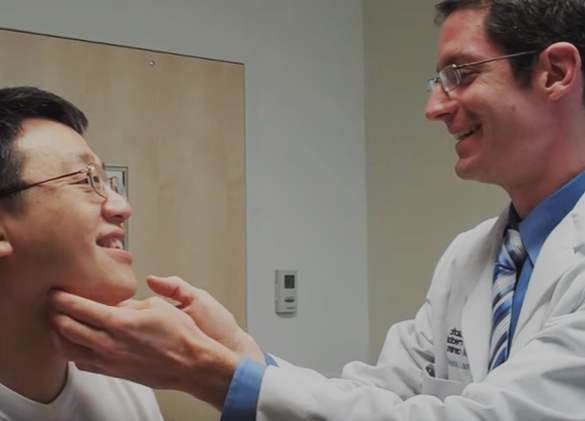See what it takes to rebuild a saddle nose deformity (boxer's nose deformity) that resulted from Wegener's granulomatosis using rhinoplasty surgery and ear cartilage grafting.
In my last post I discussed what a saddle nose deformity is and what can cause such a problem. Today I'll discuss what goes into the repair of a boxer's nose deformity.
Wegener's Saddle Nose Rhinoplasty
This gentleman came to me looking 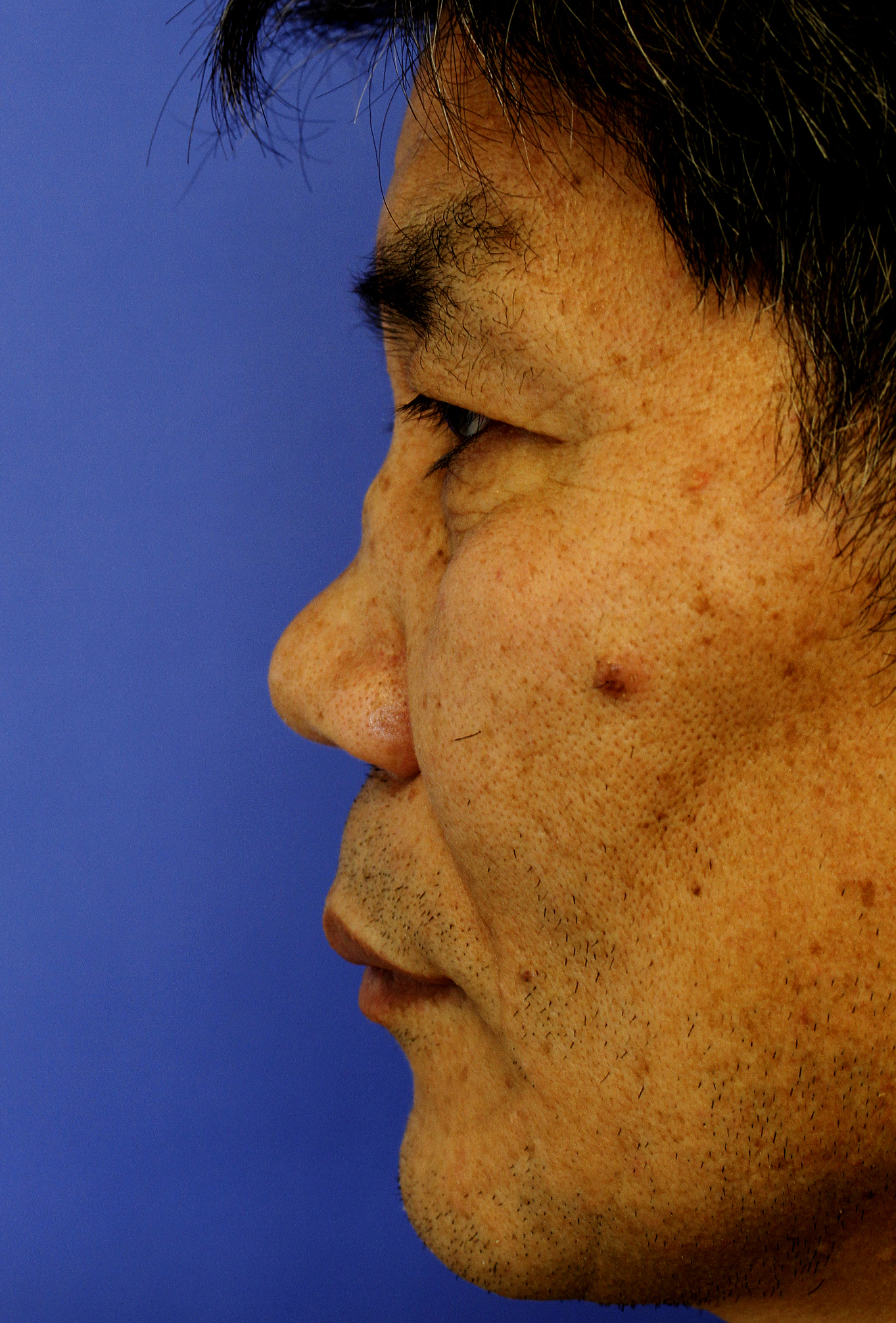 to improve his severely depressed nasal bridge that was deformed from his Wegener's granulomatosis disease. His Wegener's disease was well-controlled by his rheumatologist using medication which allowed us to consider rhinoplasty repair.
to improve his severely depressed nasal bridge that was deformed from his Wegener's granulomatosis disease. His Wegener's disease was well-controlled by his rheumatologist using medication which allowed us to consider rhinoplasty repair. The patient didn't have any nasal breathing problems and his internal nasal structure was intact. I prefer rebuilding bridges in cases like these using a patient's own tissue. Cartilage provides a great material for this purpose. Due to concern regarding the patient's Wegener's disease ultimately affecting a septal cartilage graft, we decided to use either ear or rib cartilage.
During our preoperative consultation digital morphing was performed to simulate what level of improvement I thought was possible with surgery:
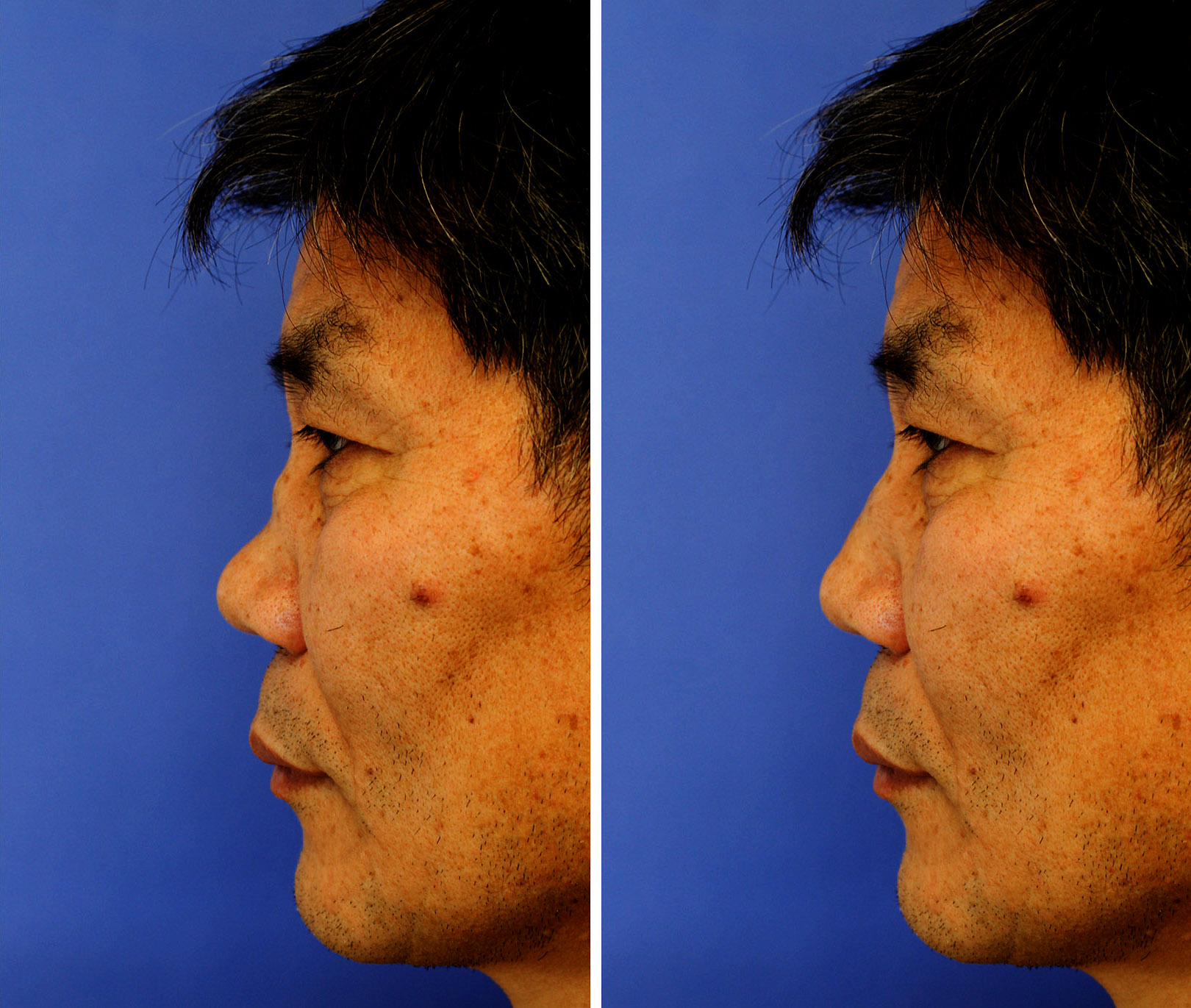
Conchal Ear Cartilage Harvest
Using an incision behind the patient's ear we harvesting ear cartilage from the patient's conchal bowl. The conchal bowl is the cupped portion of ear cartilage located just behind the opening of the ear canal. When harvesting ear cartilage we leave the skin lining in place so the ear retains its normal appearance.Making The Dorsal Augmentation Cartilage Graft
This patient's conchal ear cartilage was long enough to span the entire length of the patient's depressed bridge. Once harvested the cartilage was carved into several sections which were then sandwiched together using sutures. This laminated graft was carefully beveled to avoid creating any sharp edges once placed under the nasal skin.
Nasal Bridge Graft Placement
A hidden incision was then placed inside the nose on one side to allow us to create a pocket in which to place the cartilage graft. The graft was then inserted under the skin and further careful customized carving done to ensure proper augmentation to the area. The access incision was then closed with dissolvable sutures.
Before and After Boxer's Nose Rhinoplasty Photos
So what can this approach to dorsal augmentation rhinoplasty achieve?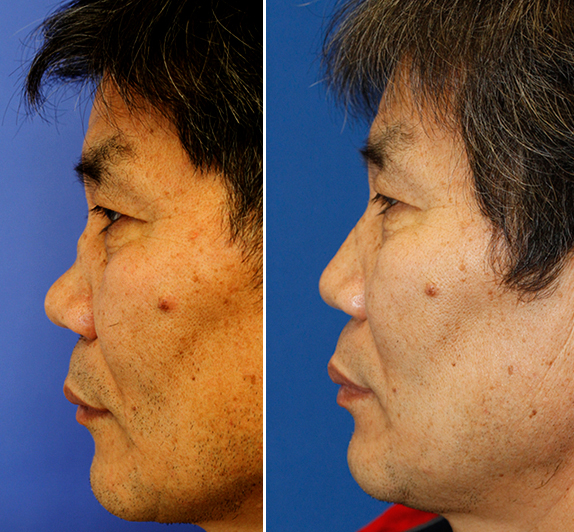
You can see in the set of photos above how surgery was able to recreate a strong, natural bridge. Note, also, how close the actual one year postoperative result is to the digital simulation I provided for the patient that I showed earlier in the post.
The next set of photos shows how saddle nose deformity repair improves the nose's appearance from a frontal view.
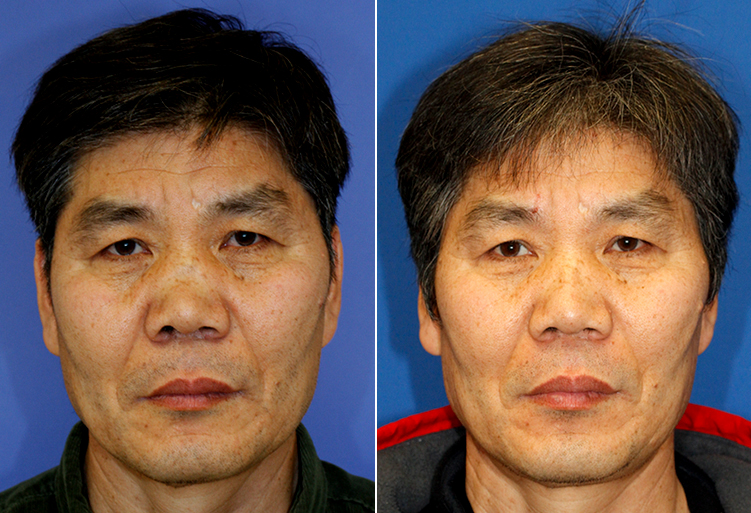
Lastly, here is a set of photos showing the patient's oblique views where once again you can appreciate the improvement made to the patient's external appearance.
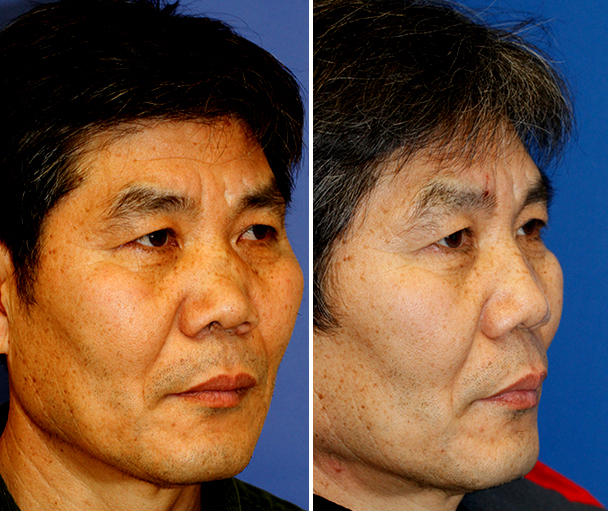
Learn more about this patient's saddle nose deformity surgery here. Check out even more before and after rhinoplasty photos here.


